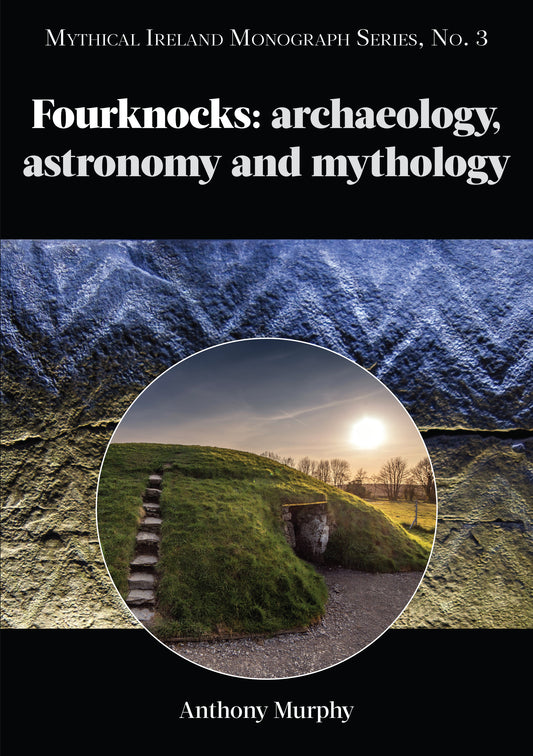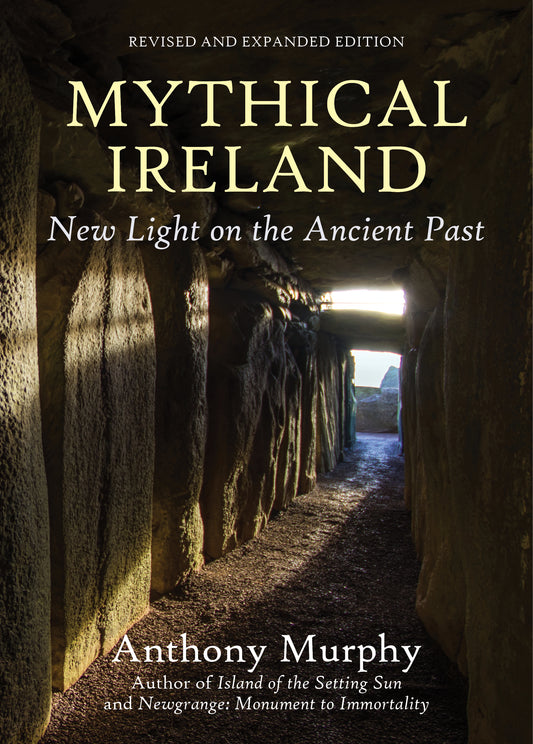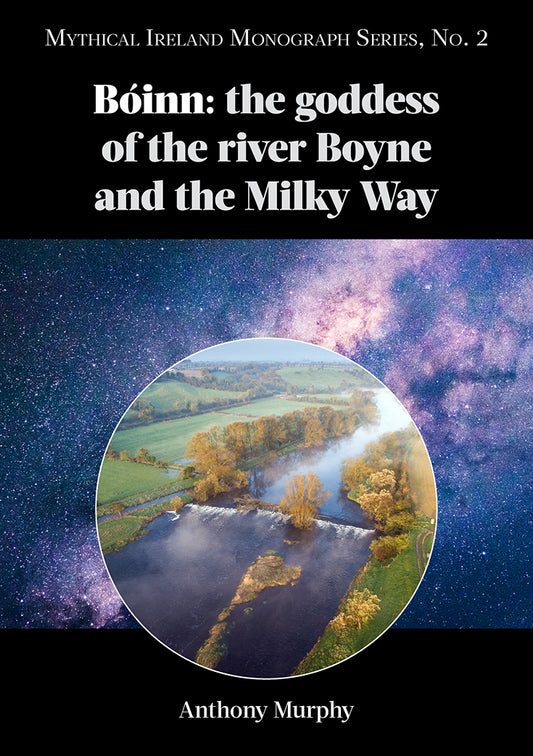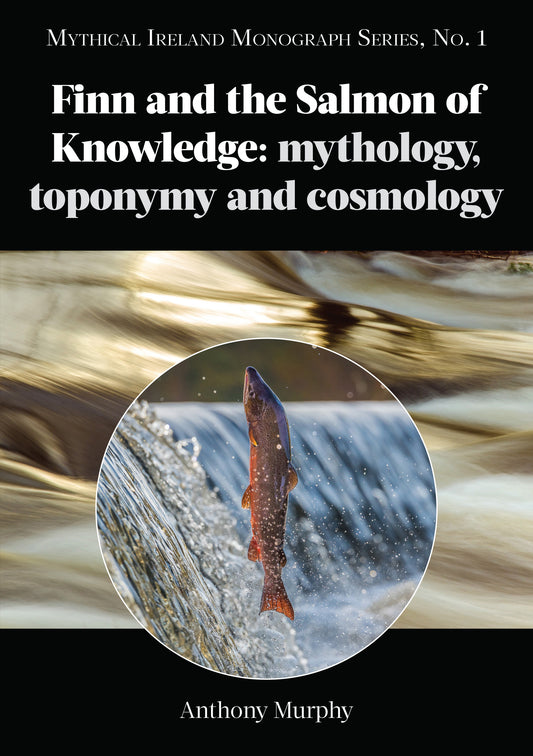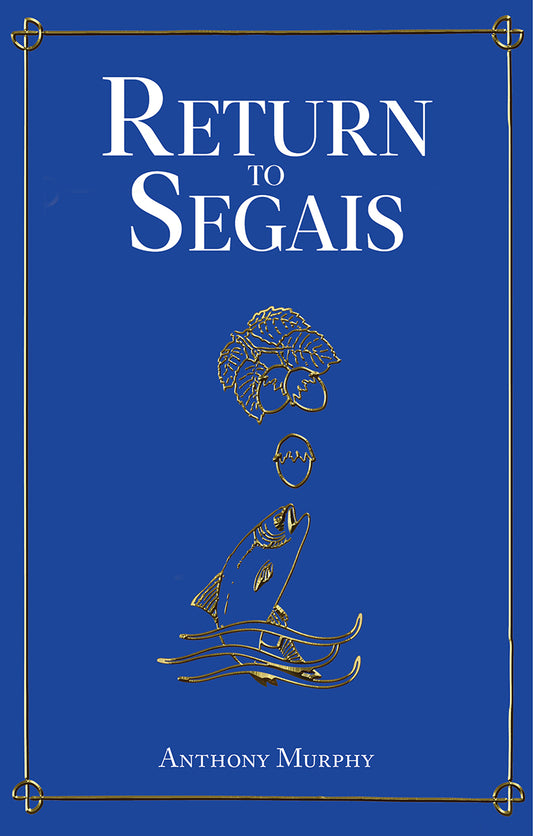
The myths and legends of Saint Patrick
Having been born and raised in the Boyne Valley, I am intensely aware of Patrick’s supposed influence on not just the history of that valley, but in fact the ecclesiastical narrative of the entire island. He is, after all, credited with bringing Christianity to this country. Some of the books I have read about Saint Patrick, which are mostly written by religious scholars – i.e. believers – tend to treat the material reverentially, and accept the accounts of Patrick’s life and mission as inherited and unimpeachable truths. All this despite the fact that – truth be told – the known historical facts of Saint Patrick could be written on the back of a postage stamp, while those details and aspects of his story that might be deemed mythological or downright fantastic would fill many volumes.[1]
My aim here is to examine and consider specific aspects of the story of St. Patrick’s arrival to the Boyne Valley from a secular or objective standpoint, and in particular to scrutinise these characteristics of his story by highlighting their mythological traits and comparing those with the pre-Christian traditions of the area.
My interest in the matter was piqued more than twenty years ago, during the early days of my research with Richard Moore for our book Island of the Setting Sun. Although I’m sure I had been taught the fact in school, it still seemed quite surprising to me that Saint Patrick and Amergin, the bard of the Milesians, had arrived In Ireland at the same locale.
Both of these important figures in the story of Ireland had put their boats to shore at Inber Colpa, the estuary of the Boyne, and stepped foot into Ireland just a couple of miles downstream of and in line of sight of the place where I had grown up in Drogheda.

St. Columba's Church at Colpe, not far from where Patrick was said to have landed at the Boyne.
Amergin was the bard and spiritual figurehead of a band of twelve brothers from Spain, who had come to wrest the land of Ireland from the Tuatha Dé Danann, the deities who were said to have been involved in the building of the great monuments of Brú na Bóinne, located between six and eight miles as the crow flies upstream of the place where Amergin was said to have come ashore.
Although the account of the arrival of the Milesians is considered pseudo-historical, the Annals of the Four Masters suggest Amergin and has brothers arrived in the year 1700BC, placing them in the Bronze Age, more than two millennia before the coming of Saint Patrick to the same spot.

The Song of Amergin, which he is said to have chanted when landing at the Boyne estuary (pictured).
Amergin’s disembarkation at the Boyne estuary represented a second landing of the Milesians, and for the purposes of brevity it is not necessary here to provide a comprehensive account of the narrative as it is presented in Lebor Gabála Erenn, the Book of Invasions. The Milesians had been successful in their attempt to colonise Ireland, and when Amergin stepped ashore his coming represented the ascendancy of the new colonisers after some amount of diplomacy and warfare.
The arrival of the Milesians has been described as the ‘conquest of the gods by mortals’.[2] The Tuatha Dé Danann agreed to keep their side of the bargain, and ventured off into the subterranean otherworld by means of the mounds they had built called the sídhe, of which Newgrange, Knowth and Dowth were the largest and most ostentatious exemplars. While it is not necessarily framed as a spiritual conquest, the fact that the Milesians were dispossessing the deities of the land of Ireland naturally lends itself to the idea that there was a religious aspect to their mission. As he placed his foot upon the shore of Inber Colpa, Amergin chanted a poem which is well-known and widely quoted in literature about the mythology and history of the Celtic world. It represented an epochal declaration, an acknowledgement of the ascendancy of the newcomers, and the beginning of a new chapter in the cosmology of the Irish people, for whom the Gaeidhil (the Milesians) have long been considered the first ancestors.
Reading an account of the arrival of Saint Patrick to the river Boyne in or around the year 2000, I wondered if it was purely coincidental that the Saint made land at the very same place as the Milesians had done some twenty-one centuries or so previously. For a long time – many years in fact – the question remained on my mind. Unable to answer it conclusively or satisfactorily, I was content to leave the matter sit, at least until such time that some material from historical or mythological literature could bring some clarity to the question.

Sunrise over the Boyne Estuary where Saint Patrick and Amergin landed.
Now, years later, and after much reading and consideration, while I find that I am unable to offer any single piece of ‘evidence’ that would conclusively answer the question, I find myself better positioned to offer a little insight to the matter. They say that history repeats itself. My experience is that mythology does too.
The arrival of the Milesians did not occur without complications. The sea tempest that had been aroused by the Dé Dananns to thwart the second arrival of the Spanish invaders led to the destruction of some of their ships and the drowning of some of their companies. One of the casualties, according to some branches of tradition, was Colpa the Swordsman, one of Amergin’s brothers, who, having been drowned, was buried in a mound not far from the Boyne where the survivors of the expedition had landed. This mound, according to local tradition, is located in the parish or townland of Colpe, south of the river, and the place-name mythology of the Metrical Dindshenchas suggests that it is from the drowning of Colpa that the name Inber Colpa is derived (with the caveat that, as is typical of the Dindshenchas, there is a second, altogether different tradition suggesting that Inber Colpa got its name from the colptha (thigh-bone) of a great monster that had been killed and dismembered at Newgrange[3]).
Another drowning in the Boyne is recalled in Acallam na Senorach, the Colloquy of the Old Men, in which the Boyne estuary is called Inber Bic Loingsigh, which we are told derived its name from ‘Beg Loigsech son of Arist that was drowned in it’. Arist, we are further told, was the son of the king of the Romans, who had come to invade Ireland, but had been drowned by a tidal wave at the mouth of the Boyne. Such were the similarities between the stories of Colpa and Arist, I wrote in Mythical Ireland[4] book that the parallels were so striking as to lead one to the tentative conclusion that they were, in fact, two versions ‘of a single old mythic narrative involving the naming of the Boyne estuary’.[5]

The mouth of the River Boyne.
An extension of that line of inquiry led me to question whether the stories of the landing of Amergin and Saint Patrick at the same spot might have been just two renderings or adaptations of a single myth. If that at first seems fantastic or far-fetched, then please bear with me. There are several threads which need to be disentangled, and I hope that in doing so we can at least undertake a comparative exercise with a view to considering some similarities in the diverse stories – while also recognising the yawning disparities between them. It seems to have been the intention of Saint Patrick, after he had sailed down the coast from Northern Ireland and landed at Inber Colpa, to go and treat with the high king, Laoghaire, with a view to gaining his assent or sanction for the establishment of a Christian settlement in the vicinity of Tara, the political capital of Ireland. If he could not succeed in obtaining this approval, he would at least aim to pay Laoghaire the courtesy of a visit, so as not to make the high king an active opponent of his mission.
The events that transpired upset this crucial goal of the mission, but it is sufficient to point out that Patrick’s intention was to establish his principal church as close as possible to Tara. In this regard, he would be instinctually following the conventions of the Roman Empire, in which the ‘administrative divisions in the political order determined, to a large extent, the religious’.[6]
Following their arrival, the Milesians set about choosing the location for their seat of political authority in Ireland, and not surprisingly the place what was chosen was Druim Cain, the ‘beautiful ridge’, which was later to be named Tara, according to the Dindshenchas, after the wife of the first Milesian king, Eremón, who had chosen the hill for them and who was later buried there, her burial place giving rise to the name Tara – Tea-Mhuir – the rampart of Tea.[7] In both cases the Milesians and Patrick the Boyne estuary provided the most convenient point of access or ingress to Tara.
It was a symbolically important location for other reasons too. Its proximity to the Brú na Bóinne complex is undoubtedly significant. Some of the principal figureheads of the Dé Dananns are intimately associated with the giant monuments of the Boyne, most notably Dagda, their chief or king, who was said to have been the builder of Síd in Broga (Newgrange) and its first inhabitant. Other deities in the pantheon associated with Brú na Bóinne in myth include Elcmar, Boinn, Oengus, Manannán, Buí, Englec and Mor-Riogáin (Morrigan), among others.
Amergin’s triumphant disembarkation on the shore of Inber Colpa was imbued with symbolic importance. He was landing in the territory of those he had come to subdue, and it would be into those very sídhe mounds that the Tuatha Dé Danann would have to retreat upon the arrival of the Milesian horde. The gods were being subjugated, and their successors had landed in the very river that bore the name of the principal female deity associated with the complex – Bóinn.
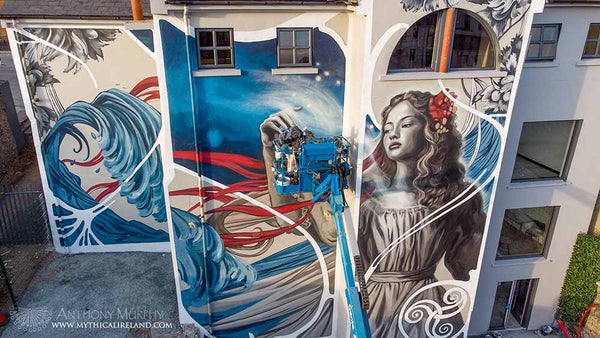
A mural depicting the goddess Bóinn in Drogheda.
A day’s travel upriver would bring the Milesians within sight of the Hill of Tara, where they would install the first in a long line of human or mortal high kings. However, Tara had already been associated with kingship for the Dé Dananns since the time of the battles of Moytura, when Nuadu of the Silver Arm had celebrated his return to the throne with a feast on the sacred hill. Although landing much later, Patrick may well have found the names of some of the old Dé Danann gods still on the lips of the local population. They may have been subdued by the Milesians in mythology, but they had not been completely overthrown and it may well have been the case that a belief in the Dé Dananns was one of the principal manifestations of the sort of ‘pagan’ belief that Patrick had come to supplant.
The longevity of the traditions associated with the old gods was such that, as late as the 19th century, Newgrange was still referred to by its much older, pre-Cistercian names.
For reasons that are not sufficiently explained, Saint Patrick chose to go to the hill of Slane by road, probably to meet some Christians who were already in the district. In so doing, Patrick sidestepped or avoided his diplomatic mission to Laoghaire and his ensuing actions ensured a dramatic confrontation with the king. It is a curious circumstance that the custom of lighting an ‘Easter fire’ of sorts was already prevalent in Ireland, for on 25th March each year a great assembly was held at Tara to mark the ‘birthday of the year’, the rebirth of vegetation. The fact that this celebration coincided with the time of the vernal equinox is likely to have been very important.

The 'Easter Fire' was lit in Ireland before Saint Patrick's arrival. (Image: Pexels/Pixabay)
One of the ceremonies of this assembly was the ‘striking forth of ‘new fire’’ by the druids of Tara which was accompanied by a very important stipulation – that no fire should be lit in Eire until this ‘Easter fire’ was first seen on the heights of Tara. The penalty for breaching this sacred custom was death. It happened that on the year of his mission to Ireland, Easter fell on 26th March, and Patrick chose Slane as the location where it would be celebrated, in full view of the king and the druids at Tara less than ten miles away to the south. The Paschal fire itself was lit by St. Cianan, who had just been ordained as the first Christian priest in Ireland by Patrick.
One detail omitted in the official accounts of Patrick’s mission to Ireland is the fact that in addition to being visible from Tara, the Easter fire could also be easily seen from the great monuments of Brú na Boinne, which lie much closer to Slane at a distance of between two and four miles, and which are overlooked by the great hill. In other words, Patrick was bringing his Christian fire right into the heart of the ancient and venerated landscape of the ‘pagans’, with their political capital to the south and the remnants of their greatest necropolis and religious temples close by to the east.
Surely this was the reason St. Patrick chose Slane. He was making a grand statement before the very eyes of the heathens, right in the centre of their spiritual heartland. As the fire blazed atop Slane on that Easter vigil, the king and his retinue would have been able to see, in the twilight sky above the glowing flame, the stars of the constellation Cygnus, that great crucifix of the heavens, emerge in the growing dark of night. This fact is not mentioned in any of the hagiographies, but its symbolic and portentous significance is clear. The cross, whose shape had been incorporated into the design of the ancient stone chambers where the ancestors were buried, now took on an entirely new meaning and significance.

Sunset at the Hill of Slane.
Slane is a significant location for other reasons which may directly link it astronomically with the story of Patrick’s Easter fire. Twenty-one years ago, in the year 2001, I visited the very well-known Cairn T at Slieve na Calliagh, Loughcrew, one of a large cluster of Neolithic passage-tombs or chambered cairns situated on the peaks of four hills in the far northwestern corner of County Meath. The purpose of the visit was to obtain some good photographs of the megalithic art inscribed on many of the stones in the interior of Cairn T.
The cairn is well known for its alignment towards the sunrises on the vernal and autumnal equinoxes. On those mornings, the light of the rising sun shines into the furthest recess of the chamber of Cairn T, brilliantly and beautifully illuminating the emblems picked onto the surface of a stone at its rear.

Cairn T at Slieve na Calliagh, Loughcrew.
The ceiling stone of this recess is also beautifully illuminated at equinox, and the whole thing makes for a very moving visual spectacle imbued with the additional significance that it has been functioning this way for well over 5,000 years.
One of the things I decided to do that day was to clamber over the sill stone and climb into that recess, with the intention of capturing a photograph of the view from its interior, looking out along the passage to the entrance. What I saw astonished me, and was quite unexpected. In the far distance, framed by the stones of the entrance to this ancient tomb, was the Hill of Slane. I hadn't read about this curious circumstance in any book, and considered it to be very significant.

The view of Hill of Slane from the rear of the chamber of Cairn T, Loughcrew.
The accounts of Saint Patrick’s mission to Ireland mention that Slane was the location of Ferta Fer Féic, the graves of the men of Fiacc. On the summit of the hill of Slane, concealed and shrouded by trees, is a mound said to be a motte, one of those castellated or defended structures built by the Anglo-Normans during the early years of their occupation of Ireland. It is almost certainly the case that in many instances, the Normans did not raise a mound upon which to build their fortifications, but merely repurposed or refashioned existing mounds for this purpose.
The very name of Slane is said to be derived, according to the Dindshenchas, from the Fir Bolg king, Sláine,[8] who reigned over the largest of the five provinces into which Ireland had been partitioned by the Fir Bolg. The Dindshenchas says that Sláine had arranged for the wood to be cleared from the Brugh – presumably the nearby Brú na Bóinne – but it does not tell us why, leading us to speculate that it may have been for the introduction of agriculture and/or for the purpose of building the great monuments there.
‘Afterwards,’ the Dindshenchas poem Sláine relates, ‘he died at Druim Fuar (the Cold Ridge), which is called Dumha Sláine, and was buried there: and from him the hill is named Sláine. Hence it was said: Here died Slaine, lord of troops: over him the mighty mound is reared: so the name of Sláine was given to the hill, where he met his death in that chief abode’.

Dumha Sláine, the ancient mound on the Hill of Slane. Photo © Richard Moore
That ‘mighty mound’, we might speculate, is the same one that stands today on the peak of the hill of Slane. Were it not for the trees that shroud the summit of the hill today, that mound would be easily visible from the end recess of the chamber of Cairn T on a clear day.
Perhaps there is room here for a reconsideration of the story of the Easter fire at Slane. The celebration of Easter is determined by astronomical means, and is intimately tied with the date of spring equinox. T.M. Charles-Edwards, in his book Early Christian Ireland, tells us that ‘Easter is a spring festival, tied to the vernal equinox, and also a lunar festival, tied to the date of the full moon.’[9]
The correct way of determining the date of Easter caused considerable controversy in the early Irish church, a dispute that was not finally resolved until 716.[10] Cairn T tells us that the mound-building farmers of the Irish Neolithic managed to get a good fix on the date of equinox some three and a half millennia before the arrival of Christianity. They did this by visual means – calculating the halfway point, measured in days, between winter and summer solstices and orienting the passage of Cairn T in such a direction as to directly capture the light of the rising sun on the equinox as it climbed into the sky above Slane.
The modern definitions of equinox as either the time when the sun crosses the celestial equator or the time when day and night are of equal length, would not have been calculable to a Neolithic sky-watcher who possessed no means of computing or measuring these things. They may have been able to determine the directions of due cast and due west, where the sun rises and sets on the equinoxes, but Cairn T is not aligned towards due east on account of the fact that the builders needed to allow some time to elapse so that the sun could climb to a sufficient altitude to allow a more brilliant illumination of the interior. For that reason, Cairn T is aligned four-and-a-half degrees south of east, so that by the time the equinox sun has gained sufficient altitude to brightly illuminate the stone at the end of the furthest recess, it is situated brilliantly above the hill of Slane as viewed from that stone.
Is this stunning visual phenomenon an ancient precursor to the Paschal Fire of Slane? Is it possible that the mound on Slane, the one referred to as Dumha Slaine in the Dindshenchas, is in fact a prehistoric burial mound, and perhaps even a passage-tomb as old as those of Brú na Boinne and Slieve na Calliagh, as Richard Moore and I have previously speculated?[11] These are questions that cannot be answered definitively at this point. A non-invasive survey of the Slane motte some years ago using ground-penetrating archaeological technology, was not able to sufficiently resolve the question of whether there are cavities (i.e. possible passaged and chambers) in its interior.[12]
Regardless of the age of the mound on its summit, it is clear that Cairn T was deliberately aligned towards Slane for the equinox sunrises. The story of Patrick’s arrival at Slane and the subsequent lighting of the fire there consists of so much mythological fabric as to make it difficult to disentangle the facts from the fable. There is further intrigue in the story, as we shall see.

Sunset around equinox over Slane viewed from Millmount.
While the biographies seem silent on the matter of why Patrick chose Slane for the celebration of Easter, the issue attains a certain clarity when we take the surrounding landscape into consideration. When Cianán lit the fire, eyes were being drawn towards Slane from multiple directions – from the south, at Tara, the political capital; from the east, at Brú na Boinne, an important spiritual and ritual centre; and from the west, at the ancient complex associated with Tailtiu and the Cailleach – Loughcrew. Patrick could have chosen a location close to the river Boyne, i.e. down in the valley, hidden from the prying eyes of the pagans for whom the lighting of the fire was an act of sacrilege. However, it was lit on the height of Slane for very specific reasons, and some of those appear to relate to the importance of Slane in the pre-Christian landscape and beliefs. Was the lighting of the Paschal Fire at Slane an attempt by Christianity to commandeer and perhaps rehabilitate the pagan customs and narratives associated with the monuments and the landscape? Perhaps this is an unanswerable question, but its discussion does seem to have some merit.
From the Hill of Slane, one can easily see on a clear day the town of Drogheda, the Boyne Estuary (Inber Colpa) where Patrick had landed, and the Irish Sea. The ancient skyline of Drogheda was dominated by another great mound whose origins have been ascribed by historians to the Normans but by myth and folklore to the Tuatha Dé Danann – Millmount. Historians say the mound was raised by the Normans in the late 12th and early 13th centuries in an effort to create a defended castle, known as the Castle-Motte of Drogheda.[13]

The martello tower on top of the mound of Millmount.
Local folklore suggests two distinct traditions for the mound – that it was the burial place of the wife of Gobán or Goibniu, the Tuatha Dé Danann smith, and that it was the final resting place of the Milesian bard Amergin, who had come ashore at Inber Colpa in sight of the mound just two miles away to the east.
During our research into possible astronomical alignments involving Millmount in the early 2000s, Richard Moore and I observed that the sun at equinox sat in the direction of Slane as viewed from Millmount. Precise observations revealed that the sun appeared to sink directly into Dumha Slaine on 24th March, just four days after vernal equinox and, interestingly, just a day before the date on which Cianán was said to have kindled the great pyre there.
There are no traditions of which we are aware suggesting any link between Saint Patrick and Millmount. A prominent tradition suggests that Saint Patrick baptized the townspeople of Drogheda at a large stone outside the town known today as Cloghpatrick, the stone of Patrick.[14]
That tradition does not assert whether Patrick was coming or going to Slane when this mass baptism took place. But there is something in the Milesian stories associated with Millmount and Inber Colpa that warrants closer consideration. The myths vary in their details. One account of the Milesian arrival suggests that Inber Colpa was named after Colpa because he was the first brother to step ashore. A conflicting account attests that it was given its name after Colpa was drowned and had been buried in a mound not far from the river.
The location of Amergin’s burial is not pinpointed in myth – the Roll of Kings, the final volume of Lebor Gabála Erenn (the Book of Invasions) tells us that he died in a battle with his brother Eremón at Bile Tened, on the periphery of Meath, but it is only in the local folklore of Drogheda that we find the suggestion that he was in fact buried at Millmount. Is it possible that the traditions suggesting Colpa was buried under a mound close to the Boyne and Amergin was similarly buried in a mound overlooking the river are merely two versions of the same story? Had there been a conflation of the traditions somewhere along the line? The two mounds in question – Millmount and Rath Cholpa – are situated just 2.3 miles (3.6km) from each other, and both are indeed south of the river. Millmount occupies such a commanding position overlooking the landscape of Inber Colpa that in former times, before the addition of modern buildings and structures, a clear view of the entire river estuary was afforded. The notion that Amergin might have been buried within sight of the place where he landed is not at all far-fetched.
Is it tantalising to consider the possibility that Saint Patrick may actually have landed at the ford of Drogheda, directly beneath the great mound of Millmount? Perhaps it is, but the orientation of the two great mounds of Drogheda and Slane towards the setting sun coinciding with the date of the lighting of the Paschal Fire is certainly noteworthy.
An examination of the precise orientation of the passage of Cairn T yields exciting and intriguing results. Using Google Earth, we see that Slane mound is situated at an azimuth of 94.49 degrees as viewed from Cairn T. Millmount, which is not visible from Cairn T, is situated at an azimuth of 93.88 degrees. Rath Cholpa is also situated precisely on this alignment, at 93.88 degrees of azimuth from Cairn T. In other words, if you plot a line (more precisely an arc, following the curvature of the earth) from Cairn T to Rath Cholpa, it passes precisely through Millmount. This could, of course, be a coincidence. Slane mound does not sit precisely on this alignment, being just 0.61 degrees off, or just over one sun-width. And there is no tradition of which I am immediately aware of Saint Patrick having been at Slieve na Calliagh. However, the fact that he is said to have landed on his mission to ‘conquer’ pagan Ireland in the same place that the Milesians are said to have arrived on their mission of conquest is, at the very least, remarkable. More remarkable still is the fact that another of the eminent places most closely associated with the story of Saint Patrick – the mountain called Croagh Patrick in County Mayo – is precisely in alignment with Millmount and Slane. In other words, if you plot a line or arc from Millmount through the mound on Slane and continue as far as the west coast you will see that it reaches, quite precisely, to the little church on the summit of Croagh Patrick. That circumstance may be entirely coincidental too, but it is intriguing to say the least, if not absolutely extraordinary.
It becomes all the more interesting when you consider some of the utterances of Amergin, spoken as he put his foot on land for the first time at Inber Colpa:
‘Who, save I, know the place where the sun sets?’

Croagh Patrick in Co. Mayo is associated with Saint Patrick.
The place where the sun set, shortly after equinox and on or around the date of the great springtime assembly of Tara, viewed from his burial mound, was over the Hill of Slane and, in the far distance, some 135 miles away, the peak of that strangely conical mountain which was known as Cruachan Aigle in pre-Christian times and Croagh Patrick afterwards. It could, therefore, be said that there is a long-distance alignment of sites associated with Saint Patrick – in fact three of the principal locations of his story – Inber Colpa, Slane and Croagh Patrick. The fact that all three have strong pre-Christian traditions associated with them lends at least some credence to the suggestion that the story of Saint Patrick’s arrival at least borrowed from some the earlier folklore associated with those sites.
Was not his entire mission of conversion and proselytization predicated on the requirement to incorporate at least some of the pre-Christian beliefs and customs into the new version of Christianity that eventually blossomed in Ireland? And was it not the case that the religion that emerged was a distinctly insular version that has been referred to as Irish or Celtic Christianity? A footnote in the translation of the Annals of the Four Masters by scholar John O’Donovan is interesting in that regard and warrants quoting here: ‘Nothing is clearer than that Patrick engrafted Christianity on the Pagan superstitions with so much skill, that he won the people over to the Christian religion before they understood the exact difference between the two systems of belief; and much of this half Pagan half Christian religion will be found, not only in the Irish stories of the middle ages, but in the superstitions of the peasantry of the present day’. He was writing in 1856.
Two further aspects of St. Patrick’s story that are clearly mythological are worthy of mention in this exploration. On Croagh Patrick, the saint endured significant challenges. He was harried and assailed by giant birds; in some accounts these are described as ‘demon-birds’. The well-known tradition that Saint Patrick banished the snakes from Ireland while standing at its summit for forty days and nights of fasting is not attested in the early accounts of his life, and seem to be a later development of the demon-bird theme. Nevertheless, there is legitimate folk tradition asserting that Saint Ratrick banished monsters and serpents into lakes at numerous locations in Ireland, including at Lough Derg, with this tradition dating back to at least the seventh century.

The many-headed Hydra of Greek myth is similar to the Mata. (Image origin).
Myths of great heroes or solar deities who battle with (and defeat) snakes and serpents and dragons are to be found in many ancient cultures. In the Boyne Valley, I have long drawn attention to the story of the Mata, a giant sluggish water serpent (that sounds something like the Hydra of Greek mythology) that licked up the Boyne depriving it of all its water. In one rendition of the tale, it was Dagda, the Tuatha Dé Danann chief who had attributes of a solar deity, who defeated the great beast with his club of anger.[15] In another version, the monster is slain and dismembered at a stone on top of the Newgrange monument. In the Egyptian Book of the Dead, there is an image of Āpep, the serpent, personifying darkness, which Horus or the rising sun must conquer before he can reappear in the east. The killing of the Hydra of Lerna by Heracles follows a similar vein.
Fascinatingly, there is mention of Patrick killing a great serpent and throwing it into the Boyne, which may be a later echo of that story of the Mata and how it was either hacked to pieces by the ‘mighty Ulstermen’ (elsewhere called the ‘men of Erin’) or clubbed to death by the Dagda. In the introduction to her book Ancient Legends, Mystic Charms and Superstitions of Ireland,[16] Lady Wilde says the following: ‘We are told also by the ancient chroniclers that serpent-worship once prevailed in Ireland, and that St. Patrick hewed down the serpent idol Crom-Cruadh[17] (the great worm) and cast it into the Boyne (from whence arose the legend that St. Patrick banished all venomous things from the island.’[18]
There may be some astronomical significance to the near-equinoctial alignment of Slane and Croagh Patrick, although what follows is admittedly tenuous. There is a possibility that the mounds of Dumha Sláine and Millmount are passage-tombs dating from the Neolithic. The archaeological jury is out on that notion, but the mound of the wife of the Gobán is mentioned as having been plundered by Vikings along with some the great mounds of Brú na Bóinne in the year 863.[19] If there was a large Neolithic passage-tomb in the area where the town of Drogheda is located today, it could hardly have been any other except the one we know as Millmount. [20]
Looking at what was happening in the sky over Slane in the Neolithic yields interesting results. The constellation we know today as Ophiuchus – the Serpent-Bearer – sets over Slane as viewed from Millmount. The constellation depicts a giant hero, Aesculapius, grappling with a large snake – the latter represented by the bipartite constellations of Serpens Caput (the head of the serpent) and Serpens Cauda (its tail). It was Richard Moore who pointed out the curious happenstance that the shape of the constellation Ophiuchus resembles that of a Bishop’s mitre possibly worn by the saint. The position of the constellation Ophiuchus is also significant because he stands astride the great river of the heavens, the Milky Way – known in Irish as Bealach na Bó Finne, the Way of the White Cow. In fact, he is positioned to the north of the sky river, which is interesting because the mound on the hill of Slane is also positioned to the north of the river Boyne.

Ophiuchus, the serpent-bearing constellation.
Ophiuchus, like Orion in the opposite part of the sky, is seen to guard the river crossing or ford (áth) – the place where the sun, moon and planets are seen to cross over the Milky Way. The shape of Ophiuchus also may be seen to represent Saint Patrick’s Bell, which he threw at the demon birds on Croagh Patrick to chase them away. The last story pertaining to Patrick that we will consider in this brief examination is told in the old coastal village of Skerries in County Dublin. After Patrick had been expelled from Wicklow by its pagan natives, he sailed northwards and landed on a small island off Skerries, which is now known as Saint Patrick’s Island in his honour. When the saint arrived on this island he had with him a goat, which was his sole companion and a source of milk.

Some of the islands off Skerries, Co. Dublin.
Patrick would go to the mainland from this island to convert the natives. On one such mission of conversion, while Patrick was on the mainland some of the people from Skerries went out to his island and stole his goat. They killed the goat, cooked it and feasted on it. When Patrick returned home he found his goat was missing. This made him very angry, and he resolved to go ashore to find out what had happened to his beloved goat. With two great strides he reached the mainland. The first step took him to the back of Colt Island, and the second to Red Island, where he confronted the people of Skerries.
The distance covered was about a mile. In other words, each stride was half a mile long! Legend says that where Patrick stepped onto Red Island (which is actually attached to the mainland by a narrow spit of land and therefore not really an island), his footprint is to be seen in the rock there to this day. Since then, the nickname ‘Skerries Goats’ is given to the people of the town to remind them of this deed.
If the story seems fantastic, and highly implausible, that’s because it is of mythological origin and may hardly relate to real events at all. If it seems familiar, that’s because St. Patrick’s feats make him sound like Finn McCool, the giant, who was able to step from Antrim to Scotland to fight with another giant there. The Giant’s Causeway was said to have been built by the giant Finn so he could walk to Scotland without getting his feet wet. The Irish name for the Causeway, Clochán na bhFomhoraigh, translates as ‘stepping stones of the Fomorians’ or ‘stepping stones of the giants’. It is my opinion that the story from Skerries about Patrick’s giant strides is a variation of the Giant’s Causeway myth, and it is highly likely that similar customs about giants and causeways will be found in the vernacular folklore of other coastal villages.
There was a belief, for instance, among the old inhabitants of the fishing village of Blackrock in Co. Louth, that an enormous causeway ‘built with huge mountain stones’, had been traced from Dunany Point, some eight or nine miles to the south, across Dundalk Bay to Cooley Point.
Another aspect of the Skerries story is very familiar, the one involving the saint’s footprint being visible in the rocks. All across Ireland there are standing stones and natural rock outcrops which are said to carry the imprint of Finn McCool’s footprints. These beliefs are so often juxtaposed or conflated with Saint Patrick as to leave one pondering whether the myths associated with Patrick were merely appropriated or copied from the antecedent traditions, with a swapping or interchanging of names the only discernible difference.
Whatever the case may be, it is clear that many of the traditions and stories associated with Patrick are wholly mythological. The hagiographies of the great Irish saints are so similarly imbued with a mythological fabric as to leave one wondering whether there is much of factual or historic matter in them at all.
On March 17th each year, Ireland’s best-known saint is celebrated in towns and cities all over the country, and in many foreign lands. A great deal of people who join in the festivities will be greatly unaware of the complex fusion of history, myth and folklore embedded in the story of his life. Rivers will turn green in his honour, pints will be drunk, and parades held in cities across the world. Here in Ireland, many people no longer believe the narratives with pious reverence like they once did, but if we can be grateful to Saint Patrick for one thing, it is that preserved within the convoluted and variegated patchwork of narratives and traditions that constitute his life’s story are glimpses at altogether different, more pagan and much more ancient Ireland.
Anthony Murphy
Footnotes
[1] I am not sure where this ‘postage stamp’ claim originates, but I am repeating something I either read in a book or saw on a documentary, and do not remember the source.
[2] Squire, Charles (1912), Celtic Myth & Legend: Poetry & Romance, The Gresham Publishing Company, pp. 119-131.
[3] https://mythicalireland.com/blogs/myths-legends/the-dagda-cosmology-in-the-early-stories-of-brog-na-boinne
[4] Murphy, Anthony (2021)[2017], Mythical Ireland: New Light on the Ancient Past, Liffey Press.
[5] Ibid, p. 205.
[6] Concannon, Eibhlín (1931), Saint Patrick: His Life & Mission, Talbot Press, p. 103.
[7] Gwynn, Edward (1903), The Metrical Dindshenchas, Part I, Royal Irish Academy Todd Lecture Series Vol. VIII, pp. 3-5.
[8] Gwynn, Edward (1924), The Metrical Dindshenchas, Part IV, Royal Irish Academy Todd Lecture Series Vol. XI, pp. 270-271.
[9] Charles-Edwards, T.M. (2000), Early Christian Ireland, Cambridge University Press, p. 396.
[10] Ibid., p 391.
[11] See Murphy, Anthony and Moore, Richard, (2020)[2006], Island of the Setting Sun: In Search of Ireland’s Ancient Astronomers, Liffey Press, pp. 214.
[12] See Archaeology Ireland Heritage Guide No. 55: Slane (https://core.ac.uk/download/pdf/35316353.pdf), which says: ‘The 2010 geophysical survey on the motte suggests a buried stone structure, and the circular enclosure surrounding it has similarities to a prehistoric barrow and enclosure at Mountfortescue, 5km to the north’.
[13] For more on this, see Matthews, Brendan (2008), Tower of Strength: A History of the Millmount Complex in Drogheda, published by the Old Drogheda Society.
[14] Garry, James (1990), ‘Townland Survey of County Louth: Mell’, CLAJ, Vol. XXII, No. 2, p. 153.
[15] https://mythicalireland.com/blogs/myths-legends/the-dagda-cosmology-in-the-early-stories-of-brog-na-boinne
[16] Volume I, published by Ticknor and Co., Boston, 1887.
[17] Crom Crúaich is remembered as the ‘chief idol of pagan Ireland’ and appears to have been an idol of gold surrounded by 12 stones standing in Mag Slécht in Co. Cavan. See MacKillop’s Oxford Dictionary of Celtic Mythology (1998), p. 100.
[18] Ibid, p. 14.
[19] This is mentioned in both the Annals of Ulster and the Annals of the Four Masters.
[20] John O’Donovan, in his footnotes to the Annals of the Four Masters, says that ‘the cave of the wife of Gobhann, at Drochat-Atha’ is ‘in the great mound at Drogheda, on which now stands a fort which commands the town’, i.e. Millmount.

